Source of River Nile and Beyond: Adventure, Coffee, Wildlife And Culture

One of the most remarkable packages for those in search in search of off-the-beaten path adventure
Itinerary
Day 1: L Arrival to Uganda, Africa’s Pearl!
River Nile Special: Source and Grade VI RapidsWe shall be waiting for you at Entebbe International Airport for pick up. We shall transfer you to your hotel in Kampala for overnight stay.
Day 2: 19th century Museum; Ssezibwa Falls, and Mabira Eco-forest Adventure
Have morning breakfast and set off to the East, stopping over at Ham Mukasa Museum. This is a site north of Mukono town where there is a house built by Ham Mukasa in 1906. Ham Mukasa was a survivor of the religious killings of the 1880s, was a distinguished actor who attended the coronation of King Edward VII in Britain in 1902. He founded some of the best schools in Uganda and produced a daughter who later became Queen of Buganda.
The museum showcases artefacts that portray the legacy of Ham (1868-1956). Some of this history is kept in hand-written and dated books and letters in which he wrote minutes of meetings, his letters to Captain Sir Daudi Chwa II, Buganda’s king between 1897 and 1939, as well as to British royals. The relic of the car (an old Dodge K7835 model) which was used by Ham Mukasa is also at the museum and is functional – you can actually drive it! There is also the Ham Mukasa’s Library which contains all Ham Mukasa’s original documents. In the midst of the living room is his old piano which is still functional – and you can play it.
You will then proceed to Sesibwa Falls, a bout thirty minutes away from the museum. The site is marked with an out-span of sharp-edged rocks and the magnificent sound of soothing waters flowing down the steep ridged stones. According to traditional legend, the two rivers named Sezibwa and its brother Mubeya, were born by a woman on her way to Kavuma Bukunja around the time of the Christian biblical prophet Isaiah. The woman gave birth to twins in form of water, where upon Sezibwa flowed west, passing many obstacles and deriving its name, while Mubeya flowed east, toward Nyenga. Many people come to the place for miracles as they believe the site has supernatural powers. The water falls are 7 metres (23 ft) high and the harmony of bird songs above the trees creates a beautiful scenery for relaxation and enjoyment. Wildlife in the surrounding forest includes bush monkeys, red-tailed monkeys and other primates and birds.
From the falls, you will finally visit Mabira Eco-tourism site. This site is a great place for general forest walks and birding with over 8 interconnecting trails. There are 312 species of trees and shrubs, 315 species of birds, 30 species of mammals (including red-tailed monkeys and grey-cheeked mangabeys) and over 200 species of butterflies. You will treated to a fascinating Zip line (Canopy walk) with six levels formed on very tall trees. This is real adventure! You will also be able to watch the striking waterfalls as they leave the forest and cross a section of bare granite rocks. The falls themselves come through a narrow, rocky canyon, cascade over 4 falls, and bottom out into a pool surrounded by towering trees.
If you wish, you will stay at community-managed bandas (Griffin Falls Camp) or a more luxurious privately owned forest lodge. The Griffin Falls Camp is owned by the Mabira Forest Integrated Community Organisation (MAFICO), a Non-Governmental Organisation (NGO). The mission of MAFICO is to improve the livelihoods and welfare of the local communities by conserving the environment through development. MAFICO encourages stewardship of the forest by its surrounding communities through environmental, networking and mobilization of 30 Community Based Organisation and fundraising for sustainable and beneficial community projects. The proceeds from the camp are ploughed back to community projects like tree planting, HIV/AIDS positive living groups, water and sanitation, Education among others.
Day 3: River Nile Special: Source, bungee jumping and White Water Rafting
Have early morning breakfast and set off for River Nile. You will then head for half day (or full day) white water rafting on the River Nile. This is an extremely adrenalin testing adventure which takes you through the roaring waters of the Nile. You are guaranteed of enjoying yourself!
In the afternoon you will go for a unique horse ride which goes through a typical Uganda village and a stunning section along the banks of the Nile. This will take 1 hour. After enjoying the horse ride you will head for Quad biking which goes besides the river Nile. This will consume only 30 minutes.
Return to your lodge for overnight stay. You will taste the Nile Beer, Uganda’s most sought after beer made at the Source of the Nile. You could choose to have this on a sunset boat cruise on the downstream Nile.
Other activities: you can choose a city tour of Jinja town or Bungee Jumping. The latter activity is also extremely interesting and not for the faint-hearted.
Day 4: Source of the Nile Cruise, Bishop Hannington and Jewish Community Tour
Have early morning breakfast and set off to the spot where the world’s longest River Nile begins its journey to Egypt. Originally starting out as a thunderous Ripon Waterfall, this rather quiet spot has been visited by literally every world leader to Uganda and most of the influential people you may know of, including Mahatma Gandhi of India (whose ashes were sprinkled at the the site)– you will have the opportunity to stand exactly where John Speke, the first European to see the spot, stood in 1862. You will take a boat ride to the natural springs that generate 30% of the Nile water!
From the source of the Nile, we shall pay a visit to the office of the first tour operator in Uganda, many centuries ago, who navigated the brutal Nile waters to sail visitors from the East to central Uganda. You will also enjoy the sight of the spot where the notorious King Kabalega of Bunyoro, a man who fiercely resisted British colonialism died from, on his way from exile.
Proceed farther east, stopping over at the Bishop Hannington murder site. This was the first Christian martyr to die in Uganda. You will have a look at the ancient palace, Hannington’s bedroom, church and reading room which he used for a month as he waited for his death. If you are daring, you will attempt climbing the stone which the thirty-eight year Christian Missionary failed to climb for hours to save his life in 1883! You will also see the anthill which his tormentor eventually turned into, and most importantly have a look at his royal clothes, cups, spears and money – original antiques used in the 1880s. You will have the opportunity to speak to his grandchildren, and the surviving wife of his last son. The Chief died in 1896.
Proceed to Mbale for lunch and hotel check-in. Relax at hotel and proceed to the only Jewish Community in Uganda. The community has preserved jewish culture for generations and continues to practice this culture in a way that is amazing! Return to Hotel for dinner and overnight stay.
If your visit is in the even year (e.g. 2018, 2020), we can arrange for you a full traditional circumcision expedition. It is such an amazing activity that is a true reflection of courage in pursuit of adulthood.
Day 5: The land of Arabica coffee and the magnificent Sipi Falls
Head off to the Sipi region in the morning after breakfast. Activities in this region will be handled by the local community youth, who will work as your guides all through. Have a morning visit to the magnificent waterfalls of the Sipi River as it traverses the Kapchorwa land from the Elgon Mountains. The sight of this waterfall, an entire river dropping off a 100 meters high cliff is amazing. You can’t stop gazing at this wonderful beauty. From the waterfall, the community will guide you through a natural swimming pool (formed by River Sipi) and further to the cave where ancient kings of the area used as a palace, until the death of the last one in the 1990s , from the same cave as his home. The activity will require hiking through coffee plantations and homesteads, and swimming in the pool will be “almost inevitable”. You could also dare the waterfall by doing abseiling.
The day will end with a visit to a few of the coffee plantations, as this highland area is known for producing the best Arabica coffee in Uganda, and perhaps Africa. You will watch firsthand how Arabica coffee is grown and processed locally, with the activity ending with a hot cup of coffee. You taste this coffee, you may never taste any other coffee – it is organic and authentic. You will participate in the whole process of coffee preparation.
Check into hotel for overnight stay.
Day 6: Travel to Karamoja, the land of Nomadic pastoralists
Day begins with morning breakfast and drive further north-east of Uganda, to the land of Karimojong Nomadic pastoralists. Arrive in the afternoon at Kidepo National Park, arguably the most beautiful wildlife protected area in Uganda. The park has recently been nominated as the most beautiful place to visit by several reputable agencies including CNN. Check in at lodge and rest.
Day 7: Kidepo Sights and sounds
Go for early morning game drive in the beautiful plains of the Kidepo Valley National park. You will encounter elephants, giraffe, zebra, lion, eland, hartebeest, cheetah (if lucky) and very large herds of Buffalo. These plains and valleys are praised by many as very beautiful and have won many international accolades.
Optional Activities in Moroto:
· A night with the Nomadic Warriors
· Evening/Morning Life of the Nomadic Warriors
· Beekeeping Tour
· Evening/Morning Life in the Manyatta
Day 8: Sights and sounds of the Ik Tribe, Uganda’s endangered tribe
Day begins with breakfast and travel through the Karimojong land to the tip of Uganda, a place where you will find what could possibly be the most marginalized and indigenous people of Africa – the Ik. These people speak their own language (which not even neighbors understand), live in mountains, have fertile soils and rains, and live in harmony with the Turkana nomadic pastoralists of Kenya. Be one of the few people to encounter this marginalized tribe of Uganda. Please note that the journey is rough and access is only granted by elders. If permission is not granted on the given day, we shall explore together the life of the Karimojong pastoralists, people that share many lifestyles with the Masai of Kenya but different in their own way. Return to lodge for overnight stay.
Optional Project:
Enroute from Kidepo National Park, you can stay in Kitgum District and participate in a number of activities. These will particularly take place at Pagen village. This is a small community which was at the heart of the civil war of the Lord’s Resistance Army of Joseph Kony. It even has a private rehabilitation centre for war victims. The village is severely affected by poverty, estimated at 86% (below poverty line) in a national poverty map. One of the key challenges the community faces is sanitary pads for girl children. This is the main reason why girls drop out of school. They currently improvise with old cloths and many choose to stay indoors during this period. You could also help the community with building clean water sources, a simple clinic and scholastic materials, such as reference books for teachers and school children.
Day 9: Return to Kampala
Return to Kampala City and transfer to Entebbe Airport for return Flight. You could also return by flight from Kidepo.



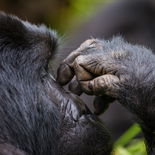
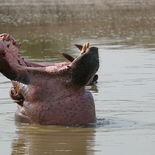
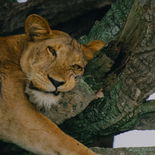



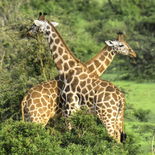
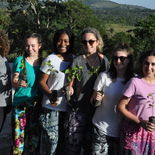

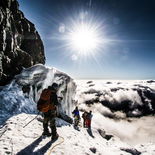
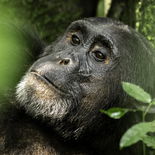
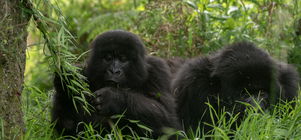
Share This Page